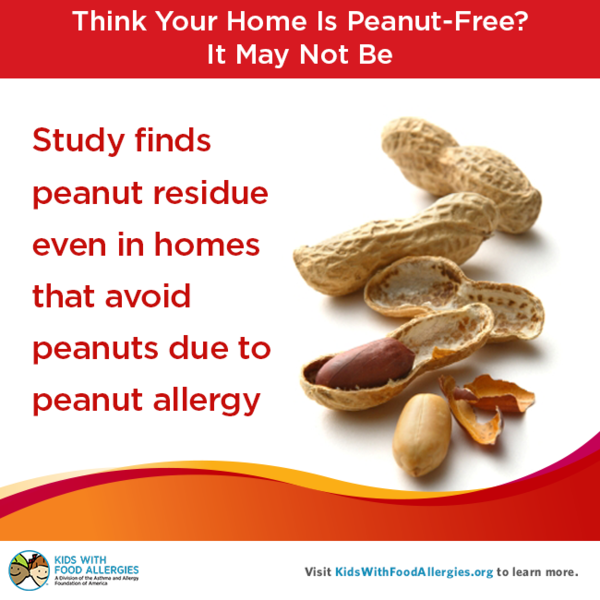
Press Release
Peanut protein can show up, even in homes with no peanuts
People allergic to peanuts make every effort to avoid anything peanut-related, including having no peanut products in their house. According to a study being presented at the American College of Allergy, Asthma and Immunology (ACAAI) Annual Scientific Meeting in San Antonio, avoiding peanuts and peanut products doesn’t reduce the level of peanut proteins found in dust in the home. Peanut proteins are the part of a peanut responsible for causing allergic reactions. Researchers examined dust from 24 houses where someone with a peanut allergy lived. Of those, 50 percent reported complete peanut avoidance in the home. They compared those results to a control group of 38 houses where no one lived who had a peanut allergy, and peanuts weren’t restricted. They found the dust collected from peanut allergic homes was not significantly lower in peanut residue than from the control homes. The good news appears to be that for the majority of people with peanut allergy to have a serious allergic reaction, the peanut protein would need to be ingested, either in the form of peanut-containing food or food contaminated with peanut.
Abstract Title: Comparison of Ara h2 in Household Dust of Peanut Allergic vs. Nonallergic Individuals
Author: Jodi Shroba, MSN, APRN, CPNP, ACAAI member
Additional information: There are several misconceptions about peanut allergies. A peanut is a legume (belonging to the same family as soybeans, peas and lentils), not a tree nut. And while it was previously believed that an allergy to peanuts was lifelong, research by the National Institutes of Health shows that about 20 percent of individuals with a peanut allergy eventually outgrow it.
About ACAAI
The ACAAI is a professional medical organization of more than 6,000 allergists-immunologists and allied health professionals, headquartered in Arlington Heights, Ill. The College fosters a culture of collaboration and congeniality in which its members work together and with others toward the common goals of patient care, education, advocacy and research. ACAAI allergists are board-certified physicians trained to diagnose allergies and asthma, administer immunotherapy, and provide patients with the best treatment outcomes. For more information and to find relief, visit AllergyandAsthmaRelief.org. Join us on Facebook, Pinterest and Twitter.



Comments (5)